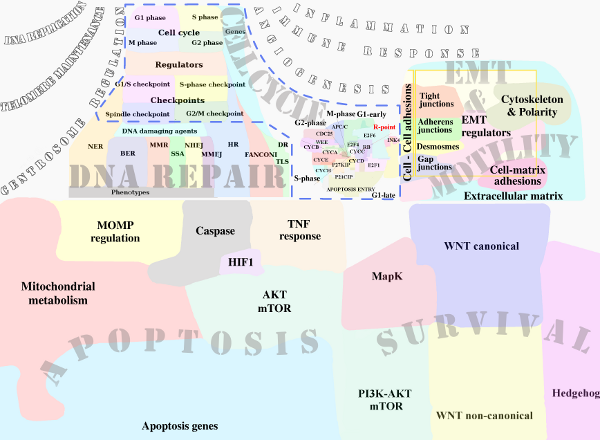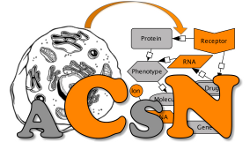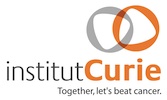Supported browsers: You can access ACSN via recent browsers such as Chrome, Firefox and Safari.
In any case, please make sure that JavaScript is enabled in your browser.
ACSN is a pathway database and a web-based environment that contains a
collection of interconnected cancer-related signalling network maps. Cell
signalling mechanisms are depicted on the maps at the level of biochemical
interactions, forming a large network of 4600 reactions covering 1821 proteins
and 564 genes and connecting several major cellular processes. The Atlas is a
"geographic-like" interactive "world map" of molecular interactions involved in
cancer.
Read more|Hide
In ACSN, molecular mechanisms involved in cancer are represented in the form of
comprehensive interconnected maps created using systems biology standards,
making these maps amenable for computational analysis. The ACSN is currently
composed of 5 maps covering signalling processes involved in apoptosis, cell
cycle, DNA repair, cell survival, EMT and cell motility and crosstalk between
them. The maps are further decomposed into 52 modules with understandable
network layout. The ACSN content is permanently expanded with new signalling
network maps and updated by the latest discoveries in the field of
cancer-related cell signalling. In addition, ACSN is not only a cancer-oriented
database: ACSN maps depict fundamental cell signalling processes and can be
used in cell signalling research.http://www.gmail.co,/
Mechanisms controlling cell death processes via apoptosis are dysregulated in
many cancers. The apoptosis map represents regulation of apoptotic machinery
from extracellular (extrinsic) or intracellular (intrinsic) inducers that
results in activation of caspases' proteolytic cascade.
Read more|Hide
In addition, apoptosis signalling involving mitochondria and dysregulation of
mitochondria metabolism is depicted on the map: the intermembrane space
contains a number of proteins which promote cell death once they are
redistributed to the cytosol. The map consists of 800 proteins, 150 genes and
RNAs, 170 cell metabolites and other chemical species and 1500 reactions and
is based on 500 scientific papers.
Creator: Simon Fourquet.
Editors: Inna Kuperstein & Luca Grieco.
Contributor: Boris Zhivotovski.
- Apoptosis modules (click the folder icon to expand/collapse the list)
Signalling pathways involved in cell survival are widely exploited by cancer, ensuring the viability of a cell in diverse conditions such as oxygen shortage.
Read more|Hide
The cell survival map is composed of four major modules each divided into
smaller functional sub-modules. The map depicts PI3K/AKT/mTOR, MapK, Hedgehog
(canonical and non-canonical) and Wnt (canonical and non-canonical) pathways
and multiple crosstalks between them. The map consists of approximately 600
proteins, 130 genes, 2000 chemical species and is based on close to 1000
scientific references.
Creators: David Cohen. Module MAPK: Luca Grieco & Denis Thieffry.
Contributors: Thierry Dubois, Gordon Tucker & Francisco Cruzalegui.
- Survival modules (click the folder icon to expand/collapse the list)
Epithelial-to-Mesenchymal transition (EMT) is a normal process during embryonic development that can be involved during wound healing, fibrosis or cancer invasion.
Read more|Hide
During EMT, tightly zipped and largely immobile epithelial cells transform into
highly mobile mesenchymal cells. The process requires excessive cytoskeletal
rearrangement, changing of cellular polarity from apical-basal into front-back
to gain cell motility. Transforming cell detaches from neighboring cells by
disrupting cell-cell adhesion. During cell migration, new adhesion points to
the matrix outside are continuously established. EMT and cell motility map is a
comprehensive map of molecular interactions taking place in the processes of
EMT and cell migration. The map contains 550 proteins; 111 genes; 1100
reactions and is based on 1300 articles. The map has modular organization and
is composed of 6 interconnected functional modules.
Creator: Nguyen Hien Anh.
Contributors: Inna Kuperstein, Philippe Chavrier, Anne-Vincent Salomon, Jean-Paul Thiery.
- EMT modules (click the folder icon to expand/collapse the list)
Cell cycle map is a comprehensive map of
molecular interactions of the cell cycle in the context of the retinoblastoma
protein (RB/RB1). RB pathway is deregulated in most of
human cancers.
Read more|Hide
The Cell Cycle map contains 78 proteins, 176 genes, 99 protein complexes,165
chemical reactions and is based on 350 publications. The map has modular
organization and is composed of 17 interconnected functional modules (RB/E2F paper).
Creators: Amélie Gelay & Laurence Calzone.
Editors: David Cohen & Nguyen Hien Anh.
Contributors: François Radvanyi & Simon Saule.
- RB-E2F modules (click the folder icon to expand/collapse the list)
DNA repair mechanisms are highly affected and dysregulated in familial and
sporadic cancers. In addition, coordination between DNA repair and cell cycle
via checkpoints are often perturbed in cancers.
Read more|Hide
An integrated DNA repair and cell cycle map is composed of interconnected
modules representing cell cycle phases and checkpoint proteins, coordinating
cell cycle and DNA repair activities. DNA repair machinery is presented by 10
pathways related to single strand and double strand DNA damage repair. The map
consists of approximately 480 proteins and genes, altogether 3400 chemical
species, around 600 reactions and is based on 500 scientific papers.
Creator: Inna Kuperstein
Contributors: Janet Hall, Marie Dutreix, Marc-Henri Stern, Mounira Amor-Guéret, Wolf Heyer, Jean-Pierre de Villartay, Fillipo Roselli, Patricia Kannouche, Cyril Buhler, Amélie Croset, Maria Quanz, Murat Saparbaev.
- DNA repair modules (click the folder icon to expand/collapse the list)



